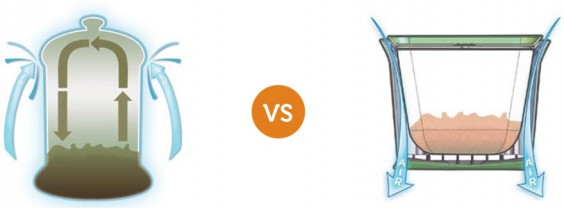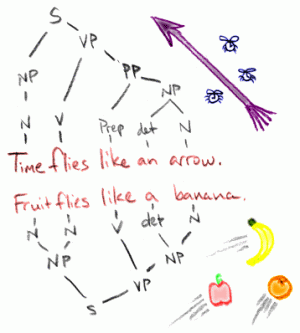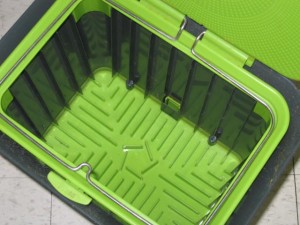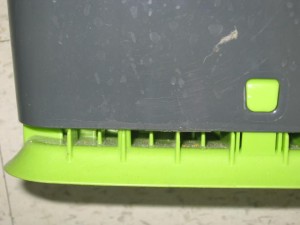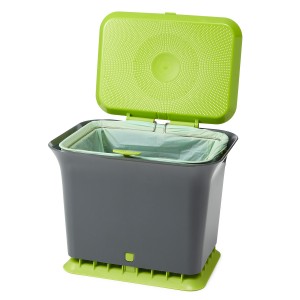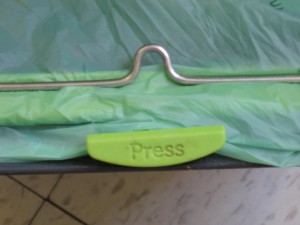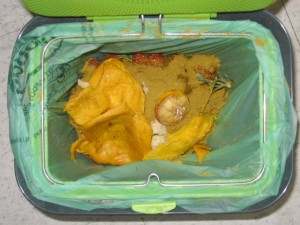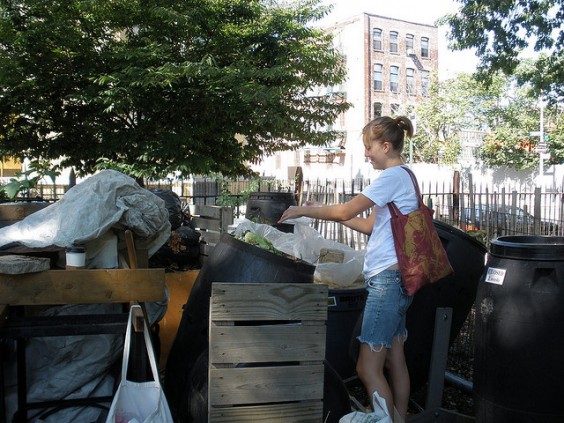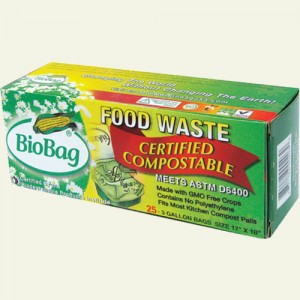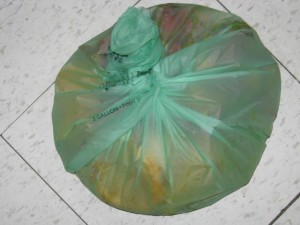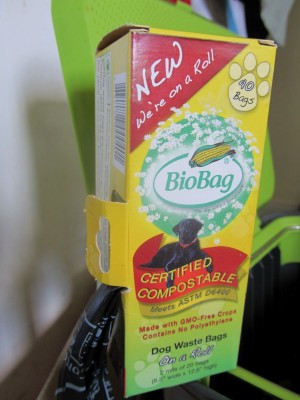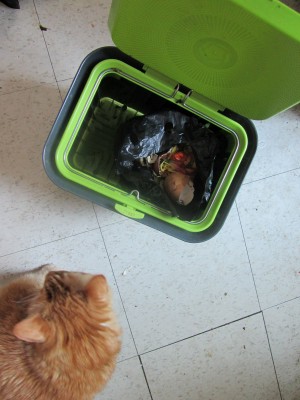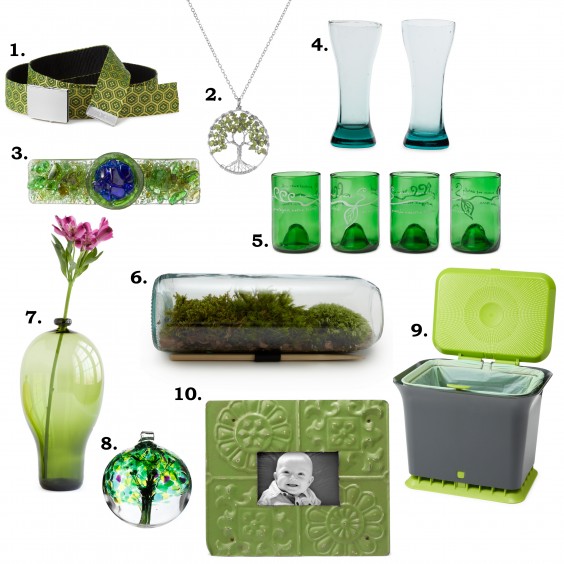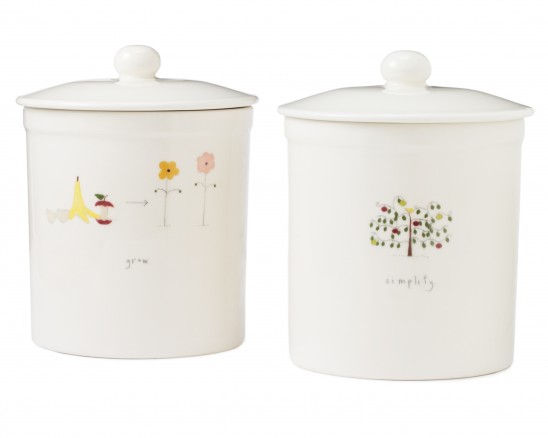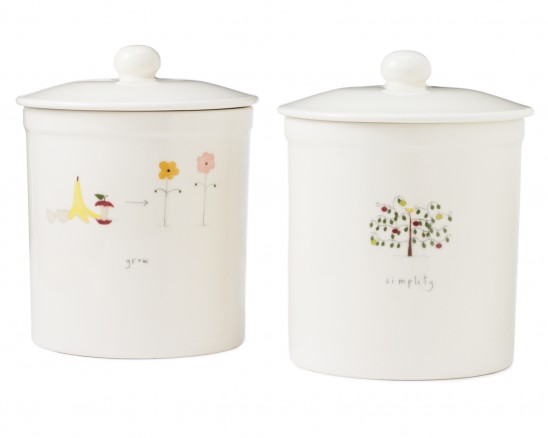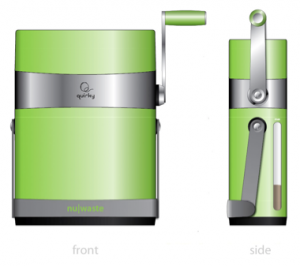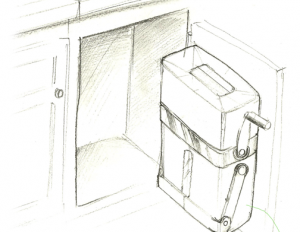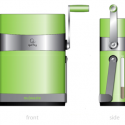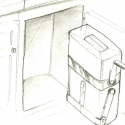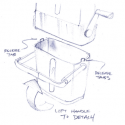
Product: Gardener’s Compost Container
Research:
I’ve decided to test a new product our Product Development team created, the Gardener’s Compost Container. It’s an earthenware compost bin used to collect food scraps in your kitchen, while keeping away odors and flies with its two piece charcoal filter. I was excited to try this product because throughout my experience of using compost bins, I’ve never managed to find one that offered the functionality and aesthetic that I was looking for. I was hoping that this one would fit my criteria. I’ve been getting ready for summer by preparing my rooftop garden and so this composting project will be a main component of that.
Hypothesis:
Based on my research, I suspect that this compost collector will perform very well as a bin that eliminates odors and keeps away the flies. In the past, I’ve tested other charcoal filters in my bathroom and in other areas of the house with great success. They not only do keep away odors, but they also reduce moisture. Since composting tends to create a lot of moisture, I’m hoping that this filter will keep the moisture to a minimum and help prevent any mold from growing in the bin.
Experiment:
I began my experiment by setting up the compost bin in my kitchen. Even though I would have loved to display this beautiful compost bin on my counter, I have very limited counter space so instead I placed it under my sink. I had a little trouble when I first placed the bio bag in it. The bio bag that comes with the product isn’t a perfect fit, so the edges of the bag did not fasten securely to the sides of the bin. It was an easy fix, though! In order to keep the sides of the bag from slipping, I used a rubber band to fasten the bag around the edges of the bin. Once the compost collector was set up, I was ready to start testing.
For the next couple of weeks, my roommates and I put our food scraps in the collector. Our food scraps included fruit, vegetables, breads, pastas, tea bags, coffee grounds, processed foods, and more. Since meat and fish are typically geared for backyard composters and not indoor compost bins (as they are likely to attract pests), we did not put this in our compost.
When we filled it for the first time, I ran into a problem when trying to empty the bin. When I tried pulling the bio bag up and out, it ripped due to the weight of the compost, leaving a mess of food scraps at the bottom of the bin. To remedy this, I recommend not waiting until it’s completely full to change the bag. Since my bag was so full, I had to dump the compost into a grocery bag, carefully avoiding any spillage. Not only was this a hassle, but it defeated the purpose of avoiding regular plastic bags, which will need to be thrown away in the trash because they are not compostable.
Throughout these weeks of composting, I constantly checked the bin with no signs of odors and flies. My roommates had confirmed that they had not noticed any odors or flies in the kitchen either since the start of this experiment, which is a good indication that the charcoal filter is functioning as it had been described it would. In addition, I did not see any mold growing inside of the bin, which indicates that the filter is doing its job of reducing the moisture created by the compost.
Conclusion:
In conclusion, I found that the compost collector performed very well when it came to eliminating odors, reducing moisture, and keeping away the flies. The charcoal filter functioned as it said it would, leaving me and my roommates very pleased with the sustained hygiene in the kitchen. Through this experiment, I did come across a couple of problems that I did not expect to run into. The bio bag that came with the compost collector isn’t specifically made for it,so it’s not a perfect fit. It also tore when I tried to lift it out of the bin.
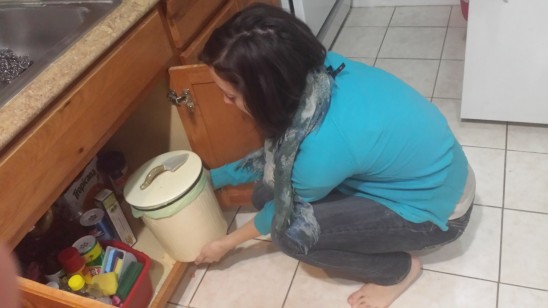
When I use this bin in the future, I’ll look for other alternatives that would function better. One solution could be to go bag-less and use Bokashi-style composting in order to keep the compost manageable. Bokashi style composting is a method that uses a bran (which consists of a mix of microorganisms) to cover and ferment food waste to decrease odor and flies. Without the bag, people may be concerned with the hygiene of the compost bin, but Bokashi is a great way to solve the bag problem while keeping the compost collector sanitary. Without the reliance on bags, the compost process is naturally more environmentally sustainable as well. However, this solution also creates inconvenience for those who need to carry their compost to a drop-off at a local farmers’ market or community garden. For those who would prefer to use a bag, I would suggest that they use a small, fitted burlap bag, which is sturdy and can be reused over and over again without the concern of wear and tear. These bags are also breathable, letting in plenty of air to help keep the compost from smelling. Most community gardens and farmers’ markets do not accept bio bags, so this makes for a great solution.
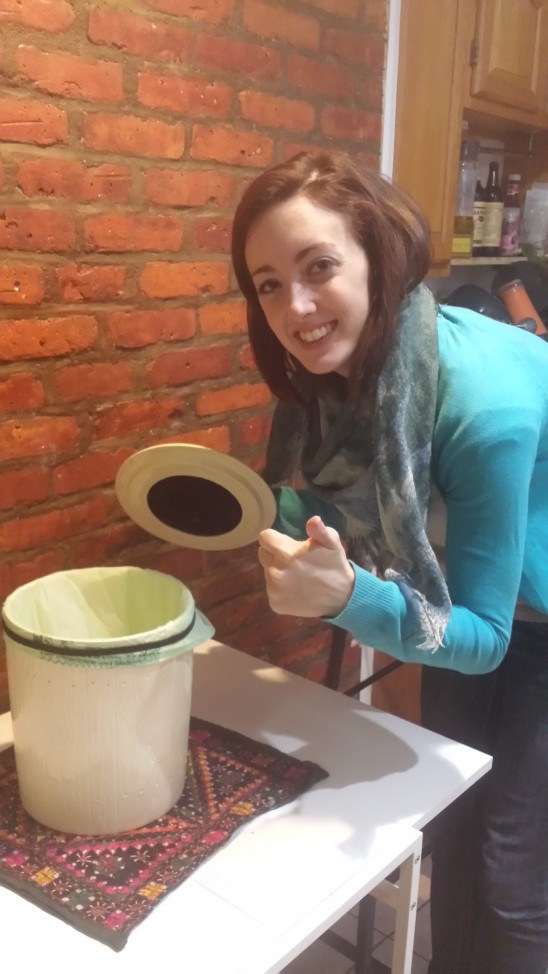
Overall, the beautiful design and charcoal filter feature make the Gardener’s Compost Container a functional design without sacrificing aesthetic. With a few adjustments to the use of the bin (eliminating the bio-bags for a more practical alternative), it makes a perfect compost collector. NYC Recycles is piloting an organics collection program where they will be picking up compost in my area this summer. So I look forward to using this to collect lots of food scraps, especially in the upcoming months!

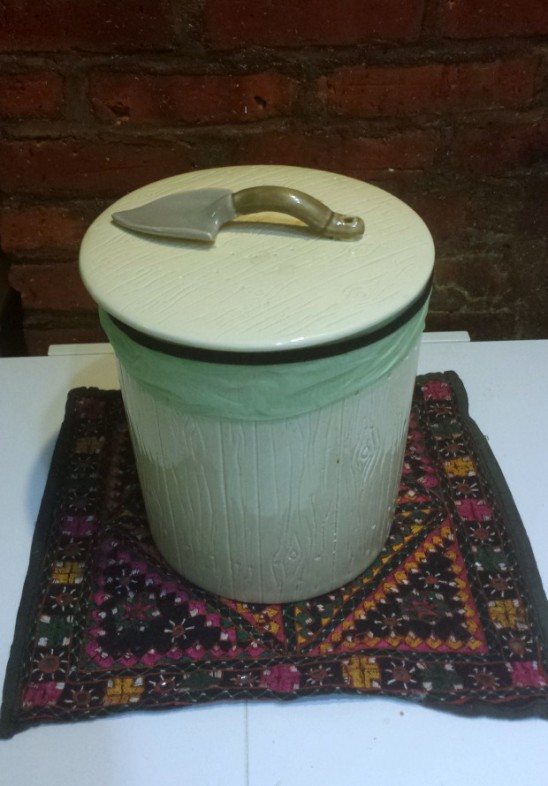
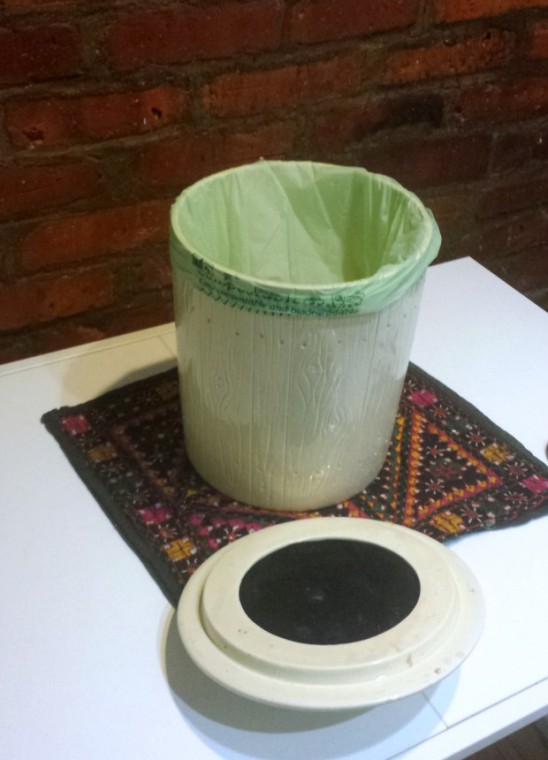
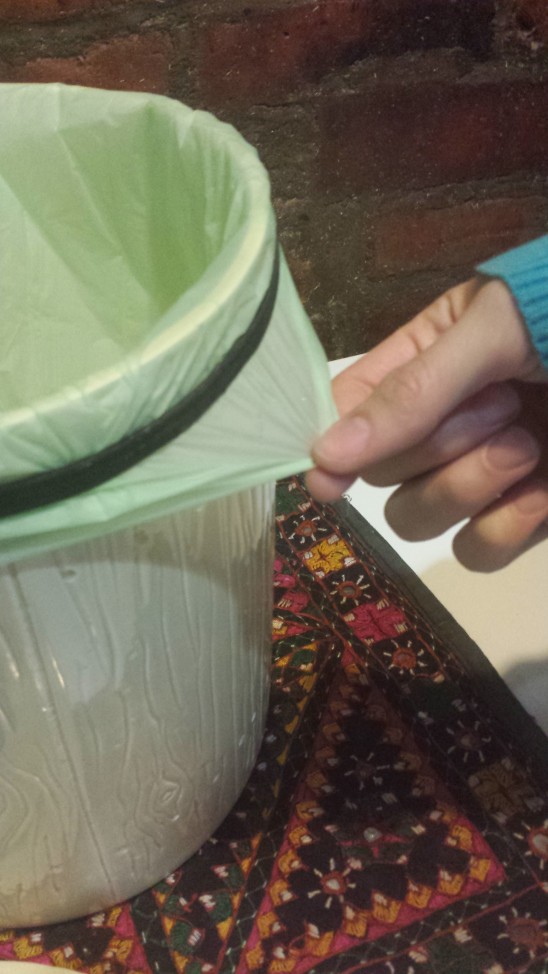
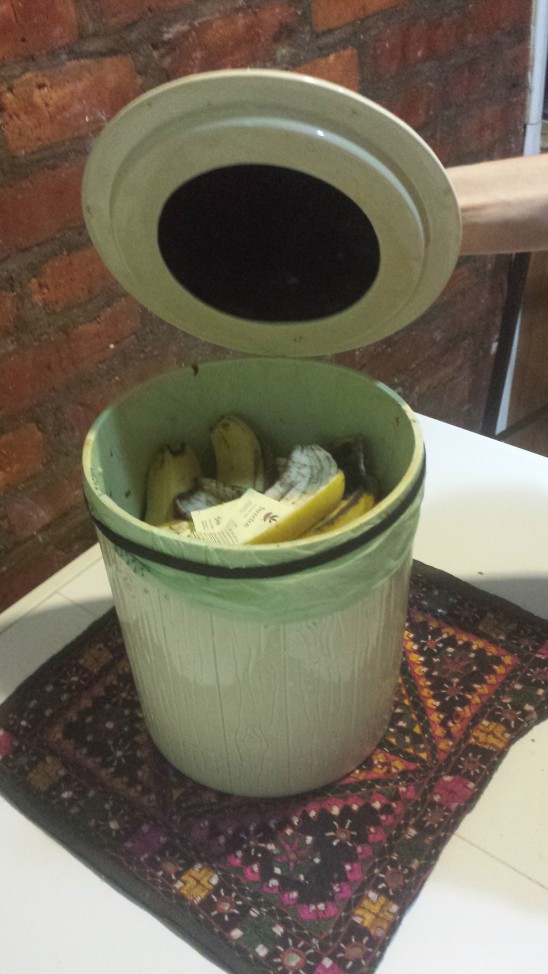
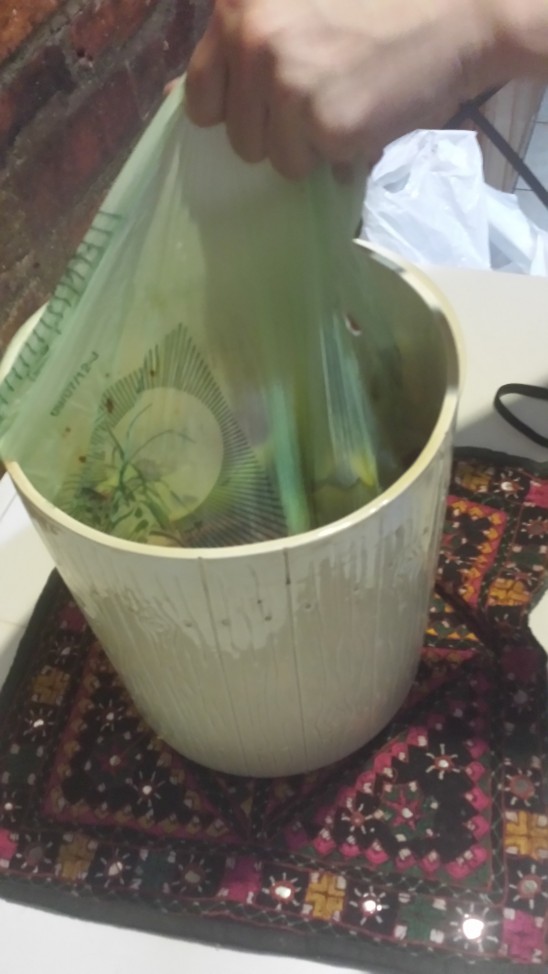

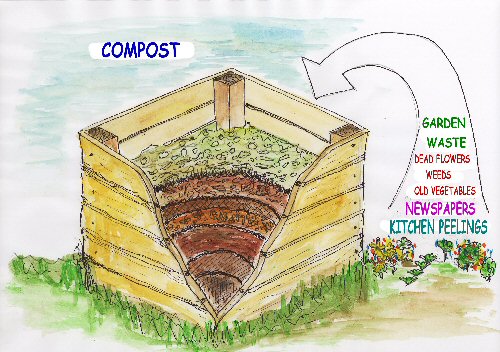

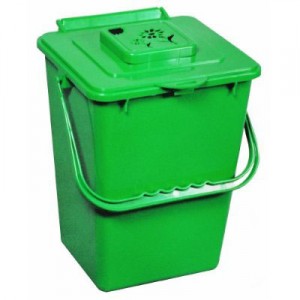
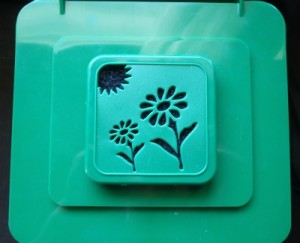
 Most indoor compost collectors either have a lid to prevent odors from escaping, or, like
Most indoor compost collectors either have a lid to prevent odors from escaping, or, like 